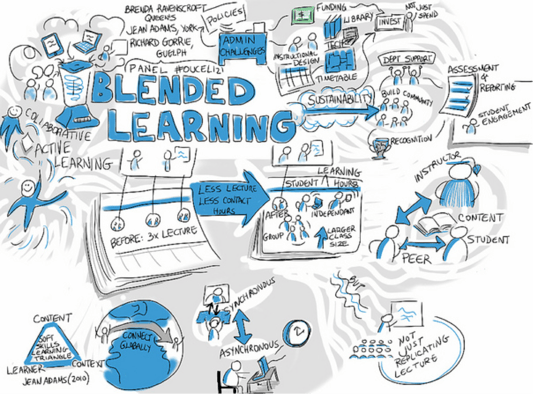
It is hard these days to look at any educational advertising or product without seeing the word blended learning attached in some fashion. This product purports to add to your blended learning initiative while this product promises a way to solve all of your technology challenges. The term blended learning could become one of those educational terms that risks being shoved into the graveyard of other educational reforms unless your school or district has an overarching purpose for moving into blended learning.
So why did we chose to move down the blended learning path? In the Uinta County #1 School District our vision is that all students will be ready for 21st century citizenship, careers and post secondary education, and we believe that systems mature over time and initial strategies for improvement begin to plateau. Over the past eight years, we have worked extremely hard to improve alignment to standards, choose aligned curriculum, and focus on improving curriculum. Results showed that these typical processes helped raise achievement, but not to the levels expected nor at the rate of growth necessary to reach our stated goal of 90% proficiency in all areas. In addition, with the advent of the new Common Core Standards in our state, we began, like many places, to see dips in overall scores. After attending the 2013 iNACOL conference in Orlando and having lengthy discussions with other leaders in our system, three primary reasons helped drive our decision to use blended learning as our next major strategy to impact student achievement.
First, we were dissatisfied by the expense of technology without seeing its usage or impact. While we knew that technology by itself would not impact achievement, increasing costs of devices and replacements with little to no effect concerned us. Summer trainings on how to use technology in our classrooms were sparsely attended, and day-to-day usage was limited to those who understood its potential. We began to ask what is the true role of technology in student learning, and what can it do more efficiently than a teacher could given limited time?
Second, even with well-designed and chosen curricula, time was still the constant in our system with personalization only done at the primary grades or with special populations. Data showed that many of our students came to us in kindergarten with a wide range of skills and knowledge and we have done lots at this age group to provide more intensive interventions and differentiation. However, as students progressed through the grades, as in most systems, the use of differentiation became less and less pronounced. Learning became the variable and time the only constant.
Last, and most importantly we realized that the most important skill we had to develop in students for success in college - independence and engagement- was sorely lacking. In comparison to the best blended learning sites, time, place and path in typical schools are always determined by the teacher creating a highly dependent situation. When students get to college, this relationship changes and many students have not developed that internal capacity to set independent goals, manage their own time, and know where to turn for help.
So how will blended learning address these issues? Having a well-designed blended learning plan will better drive our choice of devices and tools; the learning plan will drive the necessary technology. Well chosen digital tools will allow teachers and students much more personalization around individual needs as will well designed classroom and school models that allow teachers time for more small group instruction for tutoring- the holy grail in education. Finally, good tools and classroom models for blended learning focus on students setting their own time, place and path that can lead toward more independent learning. For instance, one small summer pilot we ran showed that students who were asked to spend one to two hours per week on iPads monitored by their teacher demonstrated three to six month gains.
As a system we are excited to begin using blended learning as a major strategy to personalize learning for students. We believe that the focus on personalization and growing students to become more independent learners is a critical rationale for our decision. So advice for schools and districts considering blended learning: make sure you have an overarching and compelling rationale for this strategy over others. It will make the implementation that much smoother.
About the Author: Dr Bailey is the Superintendent of Uinta County #1 School District.